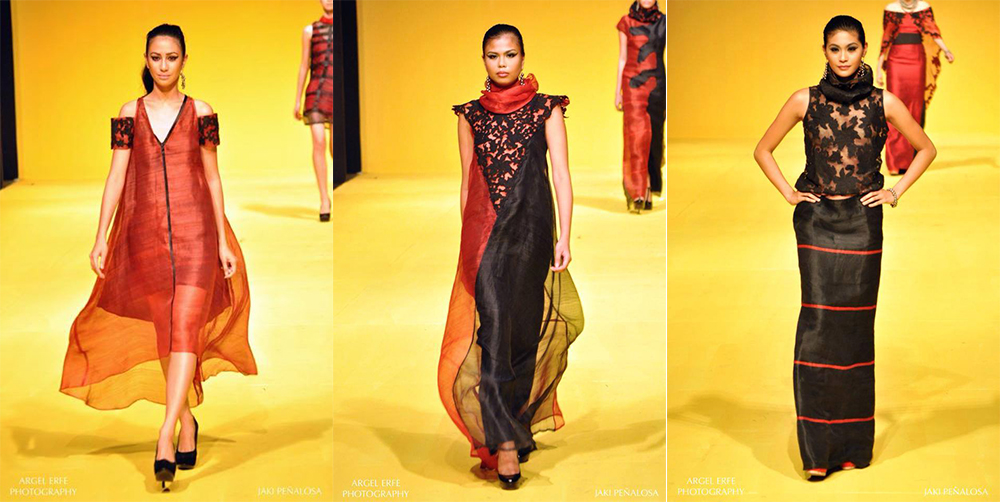She made it her calling to breathe new life into Iloilo’s ancient past as textile capital of the Philippines. As prime mover of the Iloilo Designer’s Guild (DGI), Jaki Peñalosa, is scaling new heights, using hablon, piña and abaca—fabrics indigenous to the province of Iloilo—in her diversifying designs.
Hablon is her principal textile of choice and is synonymous with a Jaki Peñalosa creation. She explained, “Hablon is a hand-woven cloth made of cotton blends in plain or plaid patterns popularly woven in the towns of Miag-ao, Oton, Badiangon, Duenas and Igbaras.”
“It’s about the tonality, texture, and wearability,” Jaki said of the hablon pieces at her Robinson’s showroom in Iloilo city. “I am simply fascinated by their patterns.” Jaki mixes locally-produced fabrics with imported materials for a more modern take. The result, as displayed in her showroom, is an array of free-flowing frocks with hand-embroidered appliqués, dramatic cocktail dresses and soft, flowy gowns spiffed with artisan-quality embroidery.
Her work as president of DGI, nurturing young talent and helping Ilonggo designers make it in the Philippine and international fashion scene, is now her life calling. Every August, DGI holds a fashion week, showcasing Iloilo’s homegrown artisans and their craft. “Designer’s Week is now on its third year and it gets bigger and grander each year,” she relayed.

Jaki comes from a family of weavers of hablon and pina. She learned the rudiments of fashion design literally on her grandmother’s knees. “My grandmother’s passion for hablon weaving inspired me to innovate with contemporary fibers, designs and styles,” she said. In the 70s, her parents and aunt put up a business called Philippine Handicrafts and Embroideries, which specialized in Philippine indigenous and shell crafts. In the 80s, they exported caftans to elite families in Nigeria and the U.S.
The fourth of seven children, Jaki cherished her role in the family business as their designer. Although she had no formal training in design, she has a keen eye for fashion. She advised her mother to create a ready-to-wear line where she could introduce her own designs. They later opened three stores in DTI, Hoskyns Compound and Amigo Plaza. When Jaki got married, she managed the three stores, and in 1990, became the owner of Kayumanggi Embroideries, later renamed Kayumanggi Designs.
Her business acumen, rooted in early years, helped Jaki earn her mark here and abroad. She had fashion shows staged in Rome, Norway, Cambodia, and the U.S. Later this year, she will be off to Europe and Canada again upon the invitation of Filipino communities there. She truly has come a long way from her first foray into the lucrative fashion industry.
Hablon, if the Ilongga designer had her way, will soon dominate catwalks in the Philippines, Asia and the whole world.
